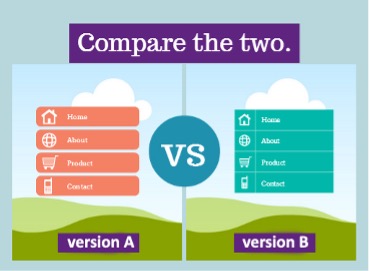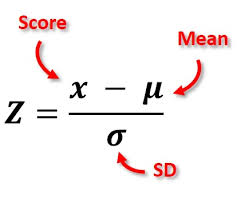ANOVA Bi-variate Broadcast Central Tendency Chi Square test Concepts Correlation cross sectional dependent t-test Dispersion Distributions Example Literature Review Marketing Mean Media Median Media Research Mode Models Podcast Qualitative Quantitative Reliable Replicability Reporting Research Areas Research Design Research General Research Methods Sampling Scales SPSS Standard Deviation Statistics Streaming Study design t-test Television Testing Thematic Analysis Theory Topics Variables Video

Elicit

Purpose and Functionality
Literature Search: Quickly locates papers on a given research topic, even without perfect keyword matching.
- Paper Analysis: Summarizes key information from papers, including abstracts, interventions, outcomes, and more.
- Research Question Exploration: Helps brainstorm and refine research questions.
- Search Term Suggestions: Provides synonyms and related terms to improve searches.
- Data Extraction: Can extract specific data points from uploaded PDFs.
Litmaps

Visual Literature Mapping
- Creates dynamic visual networks of academic papers
- Shows interconnections between research articles
- Helps researchers understand the scientific landscape of a topic
Search and Discovery
- Allows users to start with a seed article and explore related research
- Provides recommendations based on citations, references, and interconnectedness
- Uses advanced algorithms to find relevant papers beyond direct citations
Paper Digest

Paper Digest is an AI-powered scholarly assistant designed to help researchers, students, and professionals navigate and analyze academic research more efficiently. Here are its key features and functions:
Main Functions
Research Paper Search and Summarization
- Quickly find and summarize relevant academic papers
- Provide detailed insights and key findings from scientific literature.
- Assist in identifying the most recent and high-impact research in a specific field
Unique Features
- No Hallucinations Guarantee: Ensures summaries are based on verifiable sources without fabricated information
- Up-to-Date Data Integration: Continuously updates from hundreds of authoritative sources in real-time
- Customizable search parameters allowing users to define research scope
Notebook LM

NotebookLM is an experimental AI-powered research assistant developed by Google. Here are the key features and capabilities of NotebookLM:
NotebookLM allows users to consolidate and analyze information from multiple sources, acting as a virtual research assistant. Its main functions include:
- Summarizing uploaded documents
- Answering questions about the content
- Generating insights and new ideas based on the source material
- Creating study aids like quizzes, FAQs, and outlines
NotebookLM is particularly useful for:
- Students and researchers synthesizing information from multiple sources
- Content creators organizing ideas and generating scripts
- Professionals preparing presentations or reports
- Anyone looking to gain insights from complex or lengthy documents.
Storm

STORM (Synthesis of Topic Outlines through Retrieval and Multi-perspective Question Asking) is an innovative AI-powered research and writing tool developed by Stanford University. Launched in early 2024, STORM is designed to create comprehensive, Wikipedia-style articles on any given topic within minutes.
Key features of STORM include:
- Automated content creation: STORM generates detailed, well-structured articles on a wide range of topics by leveraging large language models (LLMs) and simulating conversations between writers and topic experts.
- Source referencing: Each piece of information is linked back to its original source, allowing for easy fact-checking and further exploration.
- Multi-agent research: STORM utilizes a team of AI agents to conduct thorough research on the given topic, including research agents, question-asking agents, expert agents, and synthesis agents.
- Open-source availability: As an open-source project, STORM is accessible to developers and researchers worldwide, fostering collaboration and continuous improvement.
- Top-down writing approach: STORM employs a top-down approach, establishing the outline before writing content, which is crucial for effectively conveying information to readers.
STORM is particularly useful for academics, students, and content creators looking to craft well-researched articles quickly. It can serve as a valuable tool for finding research resources, conducting background research, and generating comprehensive overviews of various topics.
Chat GPT

ChatGPT is an advanced artificial intelligence (AI) chatbot developed by OpenAI, designed to facilitate human-like conversations through natural language processing (NLP). Launched in November 2022, it utilizes a generative AI model called Generative Pre-trained Transformer (GPT), specifically the latest versions being GPT-4o and its mini variant. This technology enables ChatGPT to understand and generate text that closely resembles human conversation, allowing it to respond to inquiries, compose written content, and perform various tasks across different domains[1][2][5].
Applications of ChatGPT
The applications of ChatGPT are extensive:
- Content Creation: Users leverage it to draft articles, blog posts, and marketing materials.
- Educational Support: ChatGPT aids in answering questions and explaining complex topics in simpler terms.
- Creative Writing: It generates poetry, scripts, and even music compositions.
- Personal Assistance: Users can create lists for tasks or plan events with its help.
Limitations
Despite its capabilities, ChatGPT has limitations:
- It may produce incorrect or misleading information.
- Its knowledge base is capped at data available up until 2021 for some versions, limiting its awareness of recent events[4].
- There are concerns regarding the potential for generating biased or harmful content.
Perplexity

Perplexity AI is an innovative conversational search engine designed to provide users with accurate and real-time answers to their queries. Launched in 2022 and based in San Francisco, California, it leverages advanced large language models (LLMs) to synthesize information from various sources on the internet, presenting it in a concise and user-friendly format.
use cases
Perplexity AI serves various purposes, such as:
- Research and Information Gathering: It helps users conduct thorough research on diverse topics by allowing follow-up questions for deeper insights.
- Content Creation: Users can utilize Perplexity for writing assistance, including summarizing articles or generating SEO content.
- Project Management: The platform allows users to organize their queries into collections, making it suitable for managing research projects.
- Fact-Checking: With its citation capabilities, Perplexity is useful for verifying facts and sources.

Consensus
Consensus AI is an AI-powered academic search engine designed to streamline research processes.
Key Features
- Extensive Coverage: Access to over 200 million peer-reviewed papers across various scientific domains.
- Trusted Results: Provides scientifically verified answers with citations from credible sources.
- Advanced Search Capabilities: Utilizes language models and vector search for precise relevance measurement.
- Quick Analysis: Offers instant summaries and analysis, saving time for researchers.
- Consensus Meter: Displays agreement levels (Yes, No, Possibly) on research questions.
Benefits
- Efficiency: Simplifies literature reviews and decision-making by quickly extracting key insights.
- User-Friendly: Supports intuitive searching with natural language processing.
Consensus AI is ideal for researchers needing accurate, evidence-based insights efficiently.

Napkin.AI
Napkin.AI is an innovative AI-driven tool designed to help users capture, organize, and visualize their ideas in a flexible and creative manner. Here are its key features and benefits:
Key Features
- Idea Capturing and Organizing: Users can quickly jot down ideas as text or sketches, organizing them into clusters or timelines for better structure and understanding.
- AI-Powered Insights: The platform utilizes AI to analyze notes and suggest connections, helping users discover relationships between ideas that may not be immediately apparent.
- Visual Mapping: Napkin.AI allows the creation of mind maps and visual diagrams, making it easier to understand complex topics and relationships visually.
- Text-to-Visual Conversion: Automatically transforms written content into engaging graphics, diagrams, and infographics, enhancing communication and storytelling.
Benefits
- Flexible Workspace: The freeform nature of Napkin.AI allows for nonlinear thinking, making it ideal for creatives who prefer an open-ended approach to idea management.
- Enhanced Creativity: AI-driven suggestions for linking ideas save time and inspire creativity by surfacing related concepts.
- User-Friendly Interface: The clean design makes it easy for users of all skill levels to navigate the platform without a steep learning curve.
Napkin.AI combines these features to provide a powerful platform for individuals and teams looking to enhance their brainstorming sessions and project planning through visual thinking.

AnswerThis.io
advanced AI-powered research tool designed to enhance the academic research experience. It offers a variety of features aimed at streamlining literature reviews and data analysis, making it a valuable resource for researchers, scholars, and students. Here are the key features and benefits:
Key Features
Comprehensive Literature Reviews
AnswerThis generates in-depth literature reviews by analyzing over 200 million research papers and reliable internet sources. This capability allows users to obtain relevant and up-to-date information tailored to their specific questions.
Source Summaries
The platform provides summaries of up to 20 sources for each literature review, including:
- A comprehensive summary of each source.
- Access to PDFs of the original papers when available.
Flexible Search Options
Users can perform searches with various filters such as:
- Source type (research papers, internet sources, or personal library).
- Time frame.
- Field of study.
- Minimum number of citations required.
Citation Management
The platform supports direct citations and allows users to export citations in multiple formats (e.g., APA, MLA, Chicago) for easy integration into their work).
Benefits
1. Time Efficiency
By automating the literature review process and summarizing complex papers, AnswerThis significantly saves time for researchers who would otherwise spend hours sifting through numerous sources.
2. Access to Credible Sources
The tool provides users with access to a wide range of credible academic sources, enhancing the quality and reliability of their research.
3. Enhanced Understanding
AnswerThis helps users understand intricate academic content through clear summaries and structured information, making it easier to grasp complex concepts.

TurboScribe
offers several impressive features and benefits. Here are three key highlights:
- Unlimited Transcriptions: TurboScribe allows users to transcribe an unlimited number of audio and video files, making it ideal for heavy usage without incurring additional costs12. This feature is particularly beneficial for professionals handling high-volume projects or individuals with frequent transcription needs.
- High Accuracy and Speed: The tool boasts a remarkable 99.8% accuracy rate, powered by advanced AI technology23. It can convert files to text in seconds, significantly reducing the time spent on manual transcription and minimizing the need for extensive corrections34.
- Multi-Language Support: TurboScribe supports transcription in over 98 languages and offers translation capabilities for more than 130 languages13. This extensive language support makes it an invaluable tool for global users, enabling efficient communication across language barriers and expanding its utility for international businesses, researchers, and content creators.

Gamma.ai
AI-powered content creation tool that offers several key functions and advantages:
- AI-Driven Content Generation: Users can create presentations, documents, and websites quickly by entering text prompts or selecting templates[1][3]. The AI analyzes input and generates visually appealing, professional-quality content tailored to specific needs[3].
- One-Click Polish and Restyle: Gamma.ai can refine rough drafts into polished presentations with a single click, handling formatting, styling, and aesthetics automatically[2].
- Flexible Cards: The platform uses adaptable cards to condense complex topics while maintaining detail and context[2].
- Real-Time Collaboration: Multiple users can work on a single project simultaneously, fostering team synergy and improving productivity[1].
- Analytics Tools: Gamma.ai provides insights on audience engagement, helping users refine their presentations for better viewer resonance[1].
- Unlimited Presentations: Users can create as many presentations as needed without restrictions, promoting creativity and productivity[1].
- Integration Capabilities: The platform integrates with over 294 systems, improving workflow efficiency[1].
- Data Visualization: Gamma.ai offers tools to help users effectively visualize data in their presentations[1].
- Export Options: The platform allows for easy export of unlimited PDF and PPT files[5].





